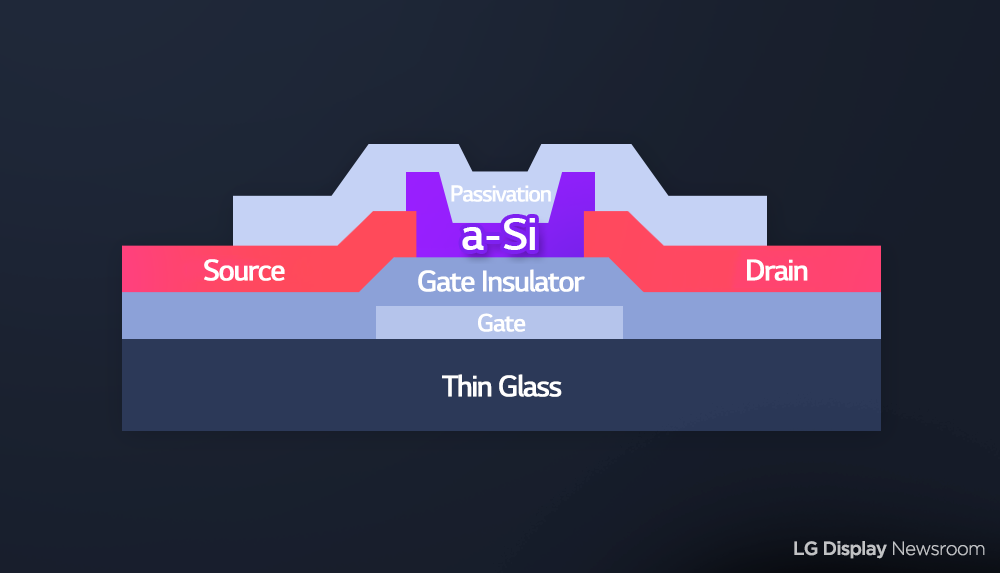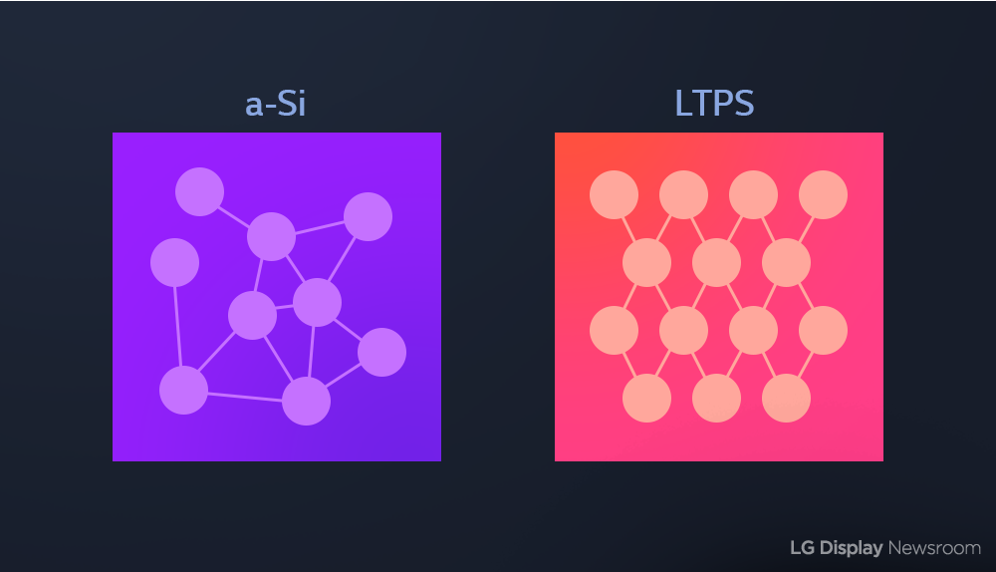DISPLAY 101
#15 Amorphous Silicon
| Amorphous Silicon (a-Si): Silicon with a non-regular atomic arrangement and no fixed shape that is part of a Thin-Film Transistor |
Let’s learn more about the types of Thin-Film Transistors (TFTs), and how they relate to the core brightness control of a display. TFTs are responsible for turning pixels on and off. There are generally three types of TFT – a-Si, LTPS, and oxide — according to the constituent materials of the active layer through which the current passes. Among them, a-Si TFTs were mainly used in the initial LCD. It is called a-Si, or amorphous silicon, because it is composed of an amorphous solid with an irregular atomic arrangement.

Why does a-Si have low electron mobility?

The advantage of a-Si is that the process is simple and fast, and the yield is higher than that of other materials and processes. Despite these advantages, as a-Si also has its irregular atomic arrangement, it has low electron mobility, which also affects the rate of signal transmission. Therefore, TFTs with new technologies such as LTPS TFT and Oxide TFT have been developed and are gradually replacing a-Si in the industry.








